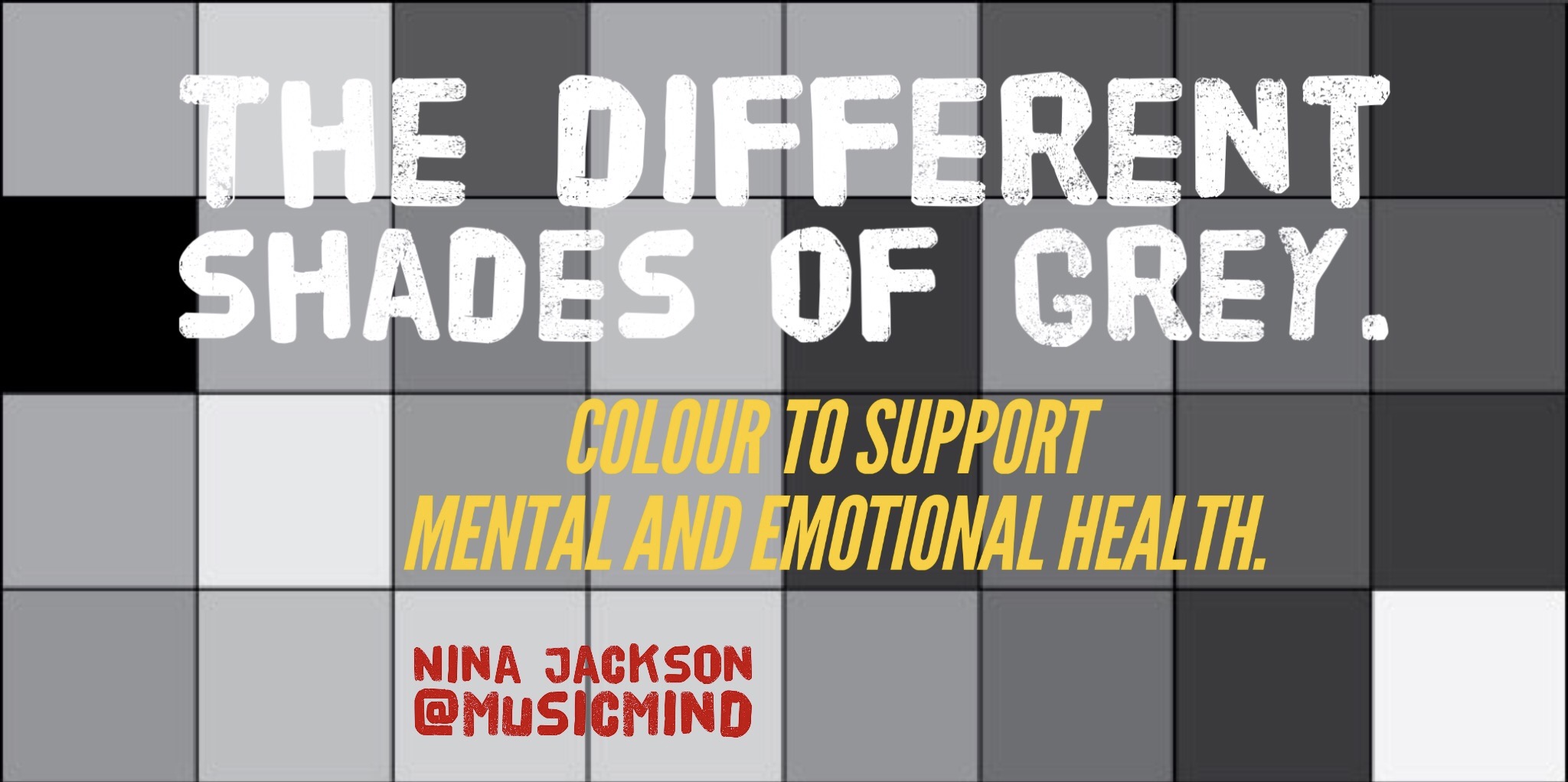We all have grey days don’t we?
But where do these grey days fit in with well-being, mental and emotional health and how can we use colour as an easy way to show someone how we are feeling without sometimes having to explain how great or difficult a day might be.
The difficulty comes in the clarity of explanation. What and how you are feeling is the most difficult and often overwhelming thing to do. To explain what you are feeling or experiencing, to try and put into words something which you’re not quite sure how to explain, but it’s just a terrible feeling. If you told someone your head was like spaghetti, the first thing they would probably imagine is the shape and texture of spaghetti – hopefully not the tinned orange sauce version by a famous brand! – but you never know, as it’s impossible for another human being to feel what you are feeling, or even know what those emotions and confusions are. They may be great at empathising with you, but ‘I know how you feel’ is an impossibility and a ludicrous comment, but we say it anyway to show empathy and support – and by the way, there isn’t an app for that – yet!
In my work as an International Mental Health Ambassador I have come across many children, teachers, parents and members of the community describe their state of emotional well-being as a colour. I often see my days in colour too. Yes, they change through the day depending on experiences and often the weather too. I’m a sensitive person (and proud of it) and if the sun is shining when I wake up, then it feels like a yellow day. Yellow days are just the best aren’t they?
It’s my favourite ‘happy’ colour, and for those of you that know me well, you know the right shade of yellow too. My latest book titled ‘Of Teaching, Learning & Sherbet Lemons’ and I also have a yellow car! I just LOVE yellow. I surround myself with yellow, yellow light, the yellow of emojis, yellow bag, and some yellow is dotted within my clothing range. When I carry a yellow bag, people are often drawn to it and say what a lovely bright colour it is an how brave I am to wear it……really? Maybe if there was more yellow in the world we wouldn’t have so many grey days? Try a Yellow Day in your school and see what happens? Maybe that’s why we are drawn and smile at Minions (another one of my favourites) because of their happy yellow colour. Or the great Pharell Williams ‘Happy’ song with Minions – of course!
So, what do we do when we have grey days?
I don’t like the different shades of grey days – the emotional ones, not the books or film (safe to say I have not read or seen either). Grey is often a good colour to describe how bad, anxious, down or just plain upset you may be feeling. The different shades of grey are important too. You may be having one of those ‘I just don’t feel myself’ days, or a ‘things are wrong today’ – a day where you just can’t make things work the way you want them to work because your brain is having a meltdown. It could be just a light grey day, or if things do not improve, it becomes a really dark grey day. This is due to a chemical imbalance in your brain causing come issues wth cognitive processing, perception and visualisation.
So, why am I talking about different shades of grey? My point in this blog is to help people who have communication difficulties, especially children who may not be able to verbalise how they are feeling. To have access to, or the opportunity to use a Colour Wheel to help them explain their mood or feeling that particular time or day may help them as well as you, the teacher. If they are experiencing difficulties then maybe create a colour wheel band for them to wear or simply give them an opportunity for open discussion or the creation of colour wheels for mental and emotional well-being.
To make it clear, I had NOT read this article before writing the paragraphs above, and I read it with great interest and enthusiasm, it may have helped me in many ways. The article on ‘Different Colors describe Happiness v Depression’ (spelt the US way) can be found here.
The research on the effects on colour on mood and emotional health is extremely interesting, especially the use of ‘The Manchester Colour Whee’l found here. The research project , analysis and statistics are very interesting.
Plutchik’s Colour Wheel of Emotion is also a good read and connector with colours and experiences too. Find it here.

You may also want to have an activity where you can allow children to express their emotions and share what colours fit with their world with some hints and tips from here.
In support of the research, discussions with thousands of people and my own experiences too, I have some suggestions for the use of colour in schools for mental and emotional well-being.
- Create a colour wheel to help students indicate to you how they are feeling.
- Get students to create their own colour wheel indicating what colours connect with which emotions so they can share it easily with you.
- Pick up some free colour paint charts from your local DIY store and get the children to create a Colour Chart or cube they can share with you.
Make it a bright sunshine day by having a listen and viewing this….spot all the Yellow!
I’d love to know your thoughts, and if you do decide on a Yellow Day in school….I’m happy to come along and bring some super smiles.
Thanks for reading. Super smiles all the way.
Nina/Ninja @musicmind






Join the conversation